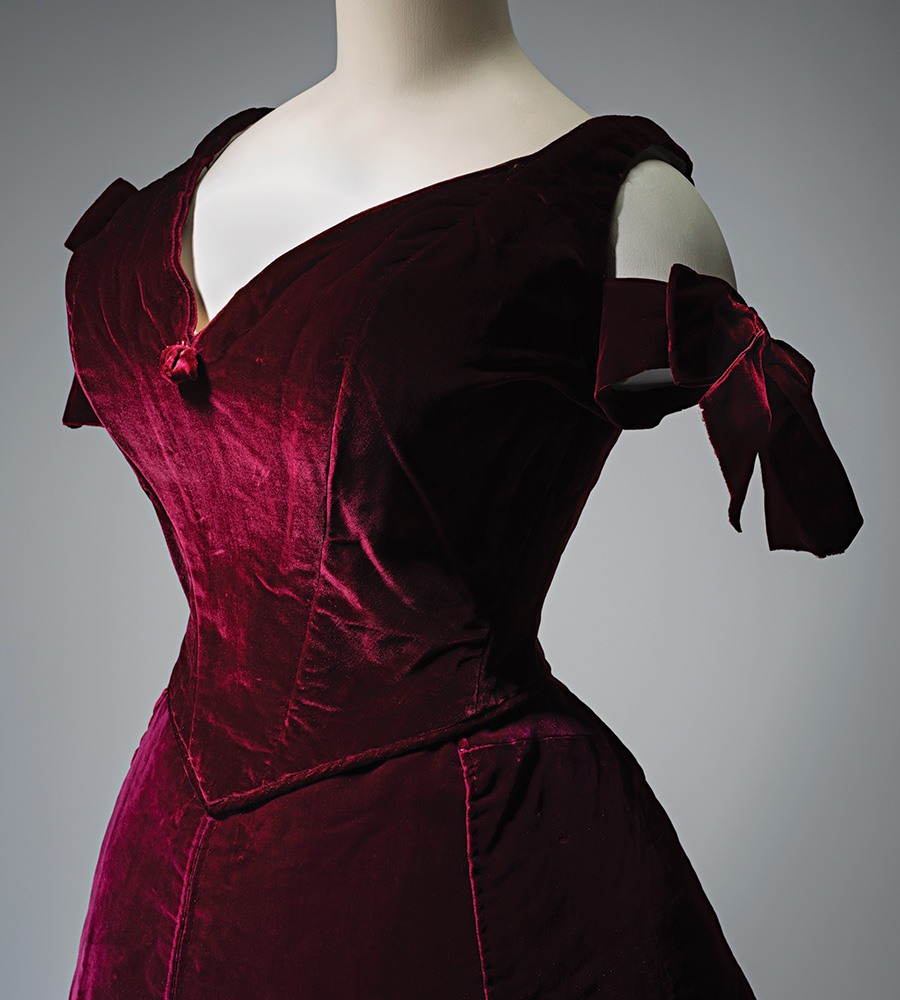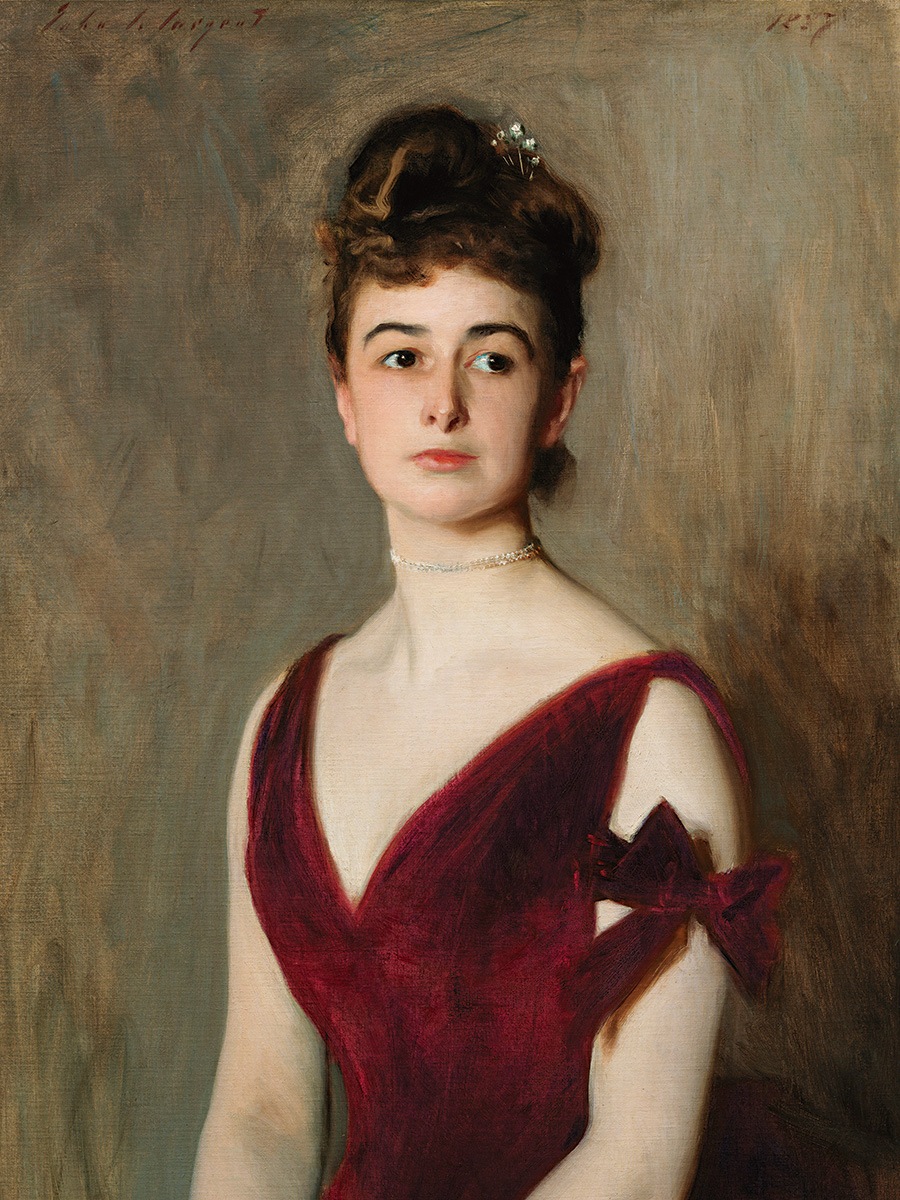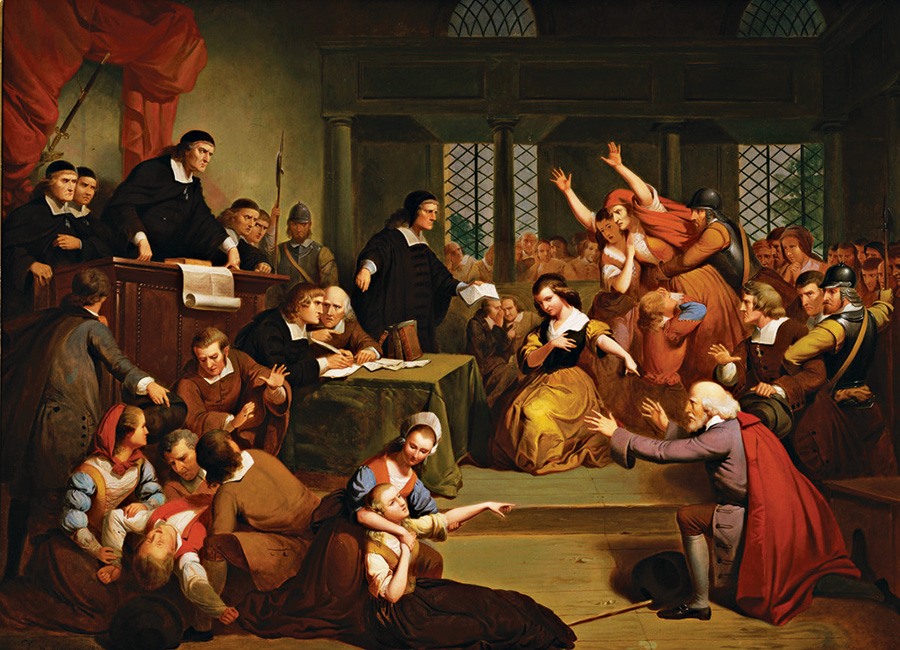Happenings
Where to go and what to see for your fall arts fix.

Silk velvet evening dress worn by Mrs. Charles E. Inches in her portrait. / Photo courtesy of the Museum of Fine Arts, Boston
Fashioned by Sargent
John Singer Sargent, an American expat best known for his evocations of Gilded Age luxury, is considered the most successful portrait painter of his era. A friend of Isabella Stewart Gardner, Sargent was the first artist-in-residence at her museum in Fenway and spent considerable time in Boston. A massive installation of his murals—Triumph of Religion, a series that took him 29 years to complete—graces the walls and ceilings of a vaulted, skylit third-floor chamber at the Boston Public Library. But it’s his portraits that are on display in this exciting new exhibition at the MFA, the first to focus on the relationship between the artist’s creative practice and fashion. Clothing played a great role in Sargent’s portraits. He often chose what his sitters wore—even if they arrived in the latest fashions, Sargent was known to alter the details. He used clothes to proclaim his own aesthetic agenda while simultaneously establishing his sitter’s social position, profession, and nationality. The exhibition includes 50 paintings and more than a dozen garments and accessories. Several works will be paired with the garments worn by the sitters.
10/8–1/15/24, 465 Huntington Ave., Boston, 617-267-9300, mfa.org.

Mrs. Charles E. Inches (Louise Pomeroy) by John Singer Sargent, oil on canvas. / Photo courtesy of the Museum of Fine Arts, Boston

Trial of George Jacobs Sr. for Witchcraft, 1855 by Tompkins Harrison Matteson, oil on canvas. / Photo courtesy of Peabody Essex Museum
The Salem Witch Trials: Restoring Justice
This PEM exhibition dives deep into the Salem Witch Trials of 1692, during which 25 innocent women, men, and children were wrongfully convicted of crimes and sentenced to death. The story is relayed through court documents and historic objects—a handwritten petition, a carved loom, a walking stick—that shed light on the people who lived through Salem’s witch trials. Many Salem residents felt that the trials were unjust, and as early as the late 1690s, they took action to restore the innocence of the wrongfully convicted. The process of shedding light on the grievous acts of intolerance continues in earnest today.
9/2–11/26, 161 Essex St., Salem, 978-745-9500, pem.org.
Hugh Hayden, Huff and a Puff
Artist Hugh Hayden uses the anthropomorphization of the natural world as a lens for exploring the human condition. On the grounds of deCordova Sculpture Park and Museum, Hayden has created a slanted replica of the one-room wood-and-brick cabin where Henry David Thoreau lived when he wrote Walden; or, Life in the Woods in 1845. Thoreau was in isolation during that year, and Hayden’s structure serves as a symbol of self-reliance, spirituality, political activism, and ecological consciousness. In Hayden’s interpretation, the entire cabin—every shingle, windowpane, and brick—dramatically slants toward the viewer, conveying a surreal, tensioned force.
10/1–ongoing, 51 Sandy Pond Rd., Lincoln, 781-259-8355, thetrustees.org.
First published in the print edition of Boston Home’s Fall 2023 issue.


